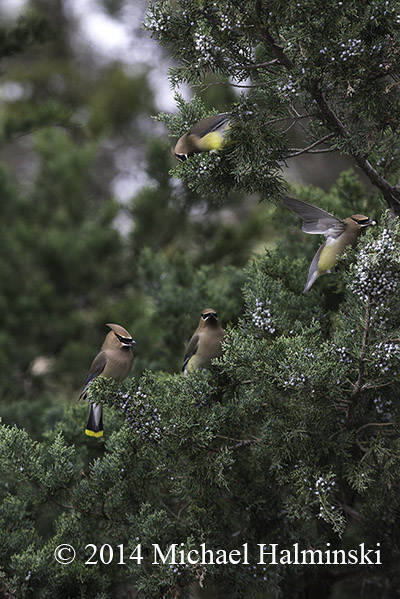Nature never ceases to amaze me as it provides for the proliferation of life.
When birds migrate, their food supply is crucial. So it happens that this time of year as the female red cedar trees are draped with succulent berries, the cedar waxwings are moving through in large flocks. They can be seen resting on power lines or collectively swirling through the villages. Then they disappear into the trees. Eastern red cedars keep their foliage and are the prevalent green in our winter landscape. They are easy to spot.
My property has lots of indigenous vegetation, including cedars. The male cedar develops tiny cones and pollenates the females. Sometimes the trees are so laden with pollen, the branches practically smoke as the wind whips through them.
 Flocks feed voraciously in the cedars around my house.
Flocks feed voraciously in the cedars around my house.
Cedar Waxwings are handsome birds with colorful plumage, a rakish black mask and crest.
 The tail is striking and looks as if it was dipped in yellow paint.
The tail is striking and looks as if it was dipped in yellow paint.
 The name of the bird comes from the waxy red secretions found on the tips of the secondary feathers.
The name of the bird comes from the waxy red secretions found on the tips of the secondary feathers.


